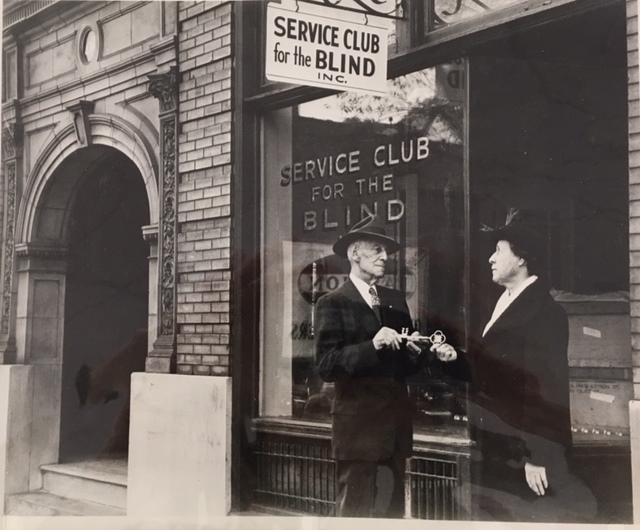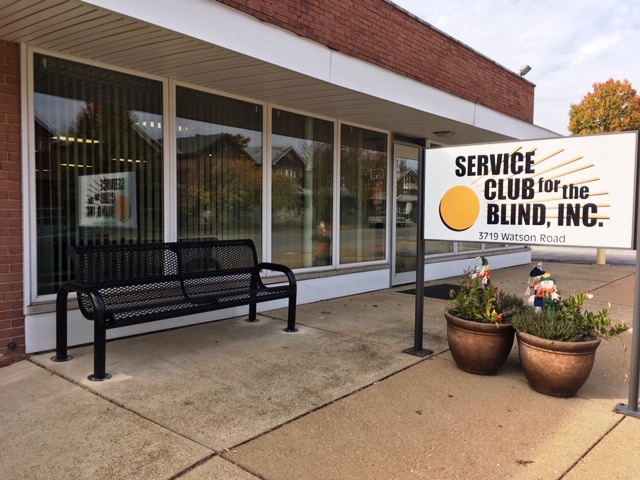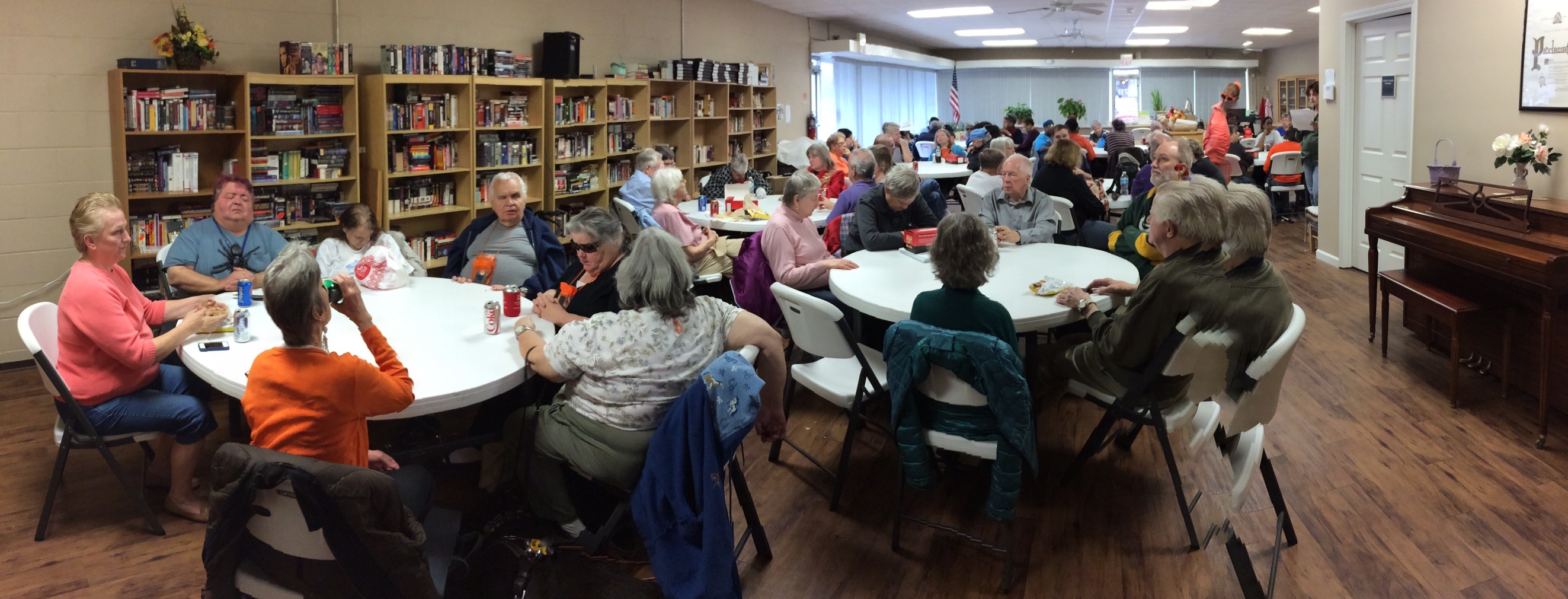The Cultural and Service Club for the Blind was founded in 1934 by Adeline Ruenzi (blind herself) to serve as a social, educational, recreational, and service organization dedicated to the physical and mental well-being of the blind. The early activities of the Club were limited to monthly socials, and when funds were available, the Club purchased glasses, medicine and clothing for the blind. The first meetings of the Club were held at the Catherine Springer Home for Businesswomen, in St. Louis. With Miss Ruenzi as Director of Education, programs soon expanded to include dancing classes, the organization of a club orchestra and chorus and sponsorship of home teaching including selling materials at cost to the blind and placing talking book machines in the homes of the blind. The Club incorporated in 1938 and had over 400 members, yet still not a permanent home. When financial difficulties led the Missouri Commission for the Blind to discontinue its operations (with the exception of its pension department) in 1939 Miss Ruenzi set out to take control of the Commission’s responsibilities on her own. Through her strength and the generosity of Dr. Meyer Wiener, the Club found its first permanent home on the second floor of the Henry L. Wolfner Memorial Library for the Blind at 3844 Olive in 1939. From this location, Miss Ruenzi sponsored the distribution and maintenance of the 800 Talking Book Machines then assigned to Missouri. She created a Home Teacher Division and sold raw material to the blind (at cost) for their home industry in addition to establishing retail outlets for their finished products.
Dr. Meyer Wiener provided an exceptional service to the St. Louis blind community by establishing the Henry L. Wolfner Memorial Library for the Blind. In recognition of his contributions the Service Club for the Blind bestowed upon him the title of Honorary Associate President of the club.
Through the early 1940s, the Club took over added responsibilities by continuing work stopped by other agencies. Prompted by the Red Cross discontinuing its Braille department and the closing of all WPA projects, the “Give Thanks For Your Sight” Canister Campaign was inaugurated in 1941 by the Mayors of St. Louis City and County. It was also during this period that the Club began to supply work to the blind and industrially inclined blind in their homes; finished products were sold in department stores and specialty shops and sales were arranged by private groups.


Club services were continued on a private enterprise basis until the Missouri Commission for the Blind began to function again in 1946. Relieved of some of the financial burdens, the Club was able to extend its programs; a social worker was hired, and the Club began to care for the sick blind.
Fundraising campaigns and generous donations relieved more of the financial strain between 1946 and 1948 and allowed Miss Ruenzi to found the Carver League for the Negro Blind, a social and recreational organization for the African American blind of Greater St. Louis. Although the Cultural and Service Club for the Blind was open to any person regardless of race, creed or religion, African Americans had not participated in the recreational activities of the Club to any extent. The Carver League was sponsored by the Club and made its home at the Henry L. Wolfner Memorial Library for the Blind.
At its home inside Wolfner through 1950, the Club continued to grow into national prominence as a philanthropic organization for the blind; activities increased a hundred-fold. The services at Wolfner increased in addition, and the Club was forced to move in 1950. The Club then relocated to 4312 Olive Street, where it had a visible display window on the sidewalk to showcase the articles made by the blind at home.
In 1957, the Club faced a major setback when a tornado tore off the roof of its renovated building, just two weeks before an open house. The contractors managed to repair the damage and the open house was held a few months later. However, the next year, an electrical fire related to the tornado damage broke out in the building. Miss Rue, as her friends called her, did not give up and held meetings in the basement of the burnt building until it was restored. She remained the President of the Service Club for the Blind until 1971.
After Mrs. Lillian Dunn’s presidency of about ten years, Fred Keller took over the role. In 1994, he found an old hardware store on Watson Road that was on sale. The Club decided to relocate there, since the Olive Street neighborhood had become unsafe for its members. The Club moved into its new home after some renovations.


Kathleen Demsky was the president for 12 years and oversaw a major facelift of the Service Club, making it a more spacious and welcoming place to meet. She continued Miss Rue’s vision of helping the blind until she retired at the end of September 2016.
Jack Lenk became the president on October 1st, 2016, and served until 2018, when he resigned and Jesuita Tabor stepped in as interim president.
Jesuita Tabor was elected president in 2020 and remains in office to this day. The Covid 19 pandemic caused health concerns that left the office building on Watson Road unused since early 2020. The Board decided to sell it in 2023 and invest the saved maintenance costs in enhancing member and client services. Meetings shifted online and members meet for social activities at local event venues. The offices relocated to a smaller suite on Manchester Road in Brentwood, MO.
